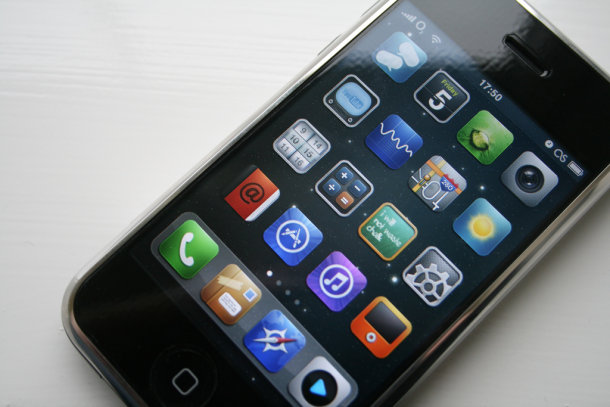Nokia versus Apple: Smartphone touchscreen race hots up

Nokia 5800 and N97 help close the gap on iPhone maker
Apple's impact on the smartphone market shows no signs of letting up - but the iPhone maker is facing stiff new competition in the touchscreen stakes.
The popularity of touchscreens on smartphones has increased massively since Apple introduced its iPhone. And in the last quarter of last year, for the first time ever, touchscreen devices accounted for more than half of all smartphone shipments globally, according to research from analyst house Canalys. Another survey conducted by the analyst at the end of last year showed that more than half (60 per cent) of 4,000 consumers polled wanted a touchscreen interface on their next mobile device.
In the latest piece of research, touchscreen smartphones took 55 per cent of the market in the fourth quarter of 2009, with shipments of touchy-feely devices up 138 per cent year-on-year, according to Canalys. By contrast, overall smartphone growth was significantly lower, standing at 41 per cent. The analyst said the total number of touchscreen smartphones shipped in 2009 was more than 75 million, with total smartphone shipments hitting 166 million.

Apple snubbed a physical keyboard for its iPhone smartphone
(Photo credit: William Hook via Flickr.com under the following Creative Commons licence)
Back in 2007 when Apple dived into the smartphone market with the iPhone, doubts were raised about the viability of using touchscreens for these high-end email and productivity tools. In Q3 2007 only nine per cent of smartphones had a touchscreen, according to Canalys. Apple's iPhone has a large capacitive touchscreen interface, with no physical keyboard and just one physical button on the front of the device.
While Apple tops Canalys' 2009 ranking of touchscreen smartphone vendors, with 33.1 per cent marketshare, this is down slightly on 2008 when it owned 37.8 per cent of the market.
By contrast, Nokia's touchscreen star is rising.
While Nokia was initially slow to join the touchscreen party - launching its first touchscreen smartphone in October 2008: the Nokia 5800 Xpress Music - it has significantly increased marketshare in the space, rising from just 1.5 per cent in 2008 to 29.5 per cent in 2009, second only to Cupertino in the touchscreen stakes.
Canalys analyst Tim Shepherd noted "no great surprise" that Apple takes top table but flagged up Nokia's "tremendous growth" in the touchscreen space.
"Nokia stands out as a very close second [in the touchscreen device space behind Apple], seeing tremendous growth thanks to models such as the Nokia 5800 and N97," he said in a statement...
"Nokia was actually the leading vendor by volume of touchscreen smartphones in the final quarter of the year."
Taiwanese mobile maker HTC - which manufacturers Google's Nexus One smartphone, among other devices - was third in the vendor rankings, with 10.2 per cent marketshare; followed by Samsung (6.4 per cent).
As well as increasing numbers of smartphones sporting touchscreens, Canalys said high end handsets continue to widen the gap with common-or-garden mobile phones by ramping up hardware capabilities. The analyst estimates the proportion of devices with embedded wi-fi rose to 84 per cent in Q4 last year; those with integrated GPS rose to 83 per cent; while almost half (43 per cent) had integral keyboards - new highs in every case, it said.
In the smartphone OS space, top-ranked operating system Symbian continued to shed marketshare to faster growing OSes such as Google's open OS Android, Apple's iPhone OS and RIM's BlackBerry platform. However Symbian remained by far the largest OS by shipment volume in 2009.
Symbian claimed 47.2 per cent marketshare of the smartphone OS space in 2009; followed by RIM (20.8 per cent); Apple (15.1 per cent); Microsoft (8.8 per cent) and Android 4.7 per cent - up from 0.5 per cent in 2008, according to Canalys.
The analyst house added that wooing developers is an ongoing challenge for hardware and platform players in the mobile industry. "Developer bandwidth is as big an issue for this industry as network bandwidth," said Canalys VP and principal analyst Chris Jones in a statement.
"This is an area where Apple is still in an enviable leadership position, having built up a vast, easy-to-access library of content and applications that will help continue to drive the success of not only the iPhone but also the other devices it launches, such as the iPad," he added.